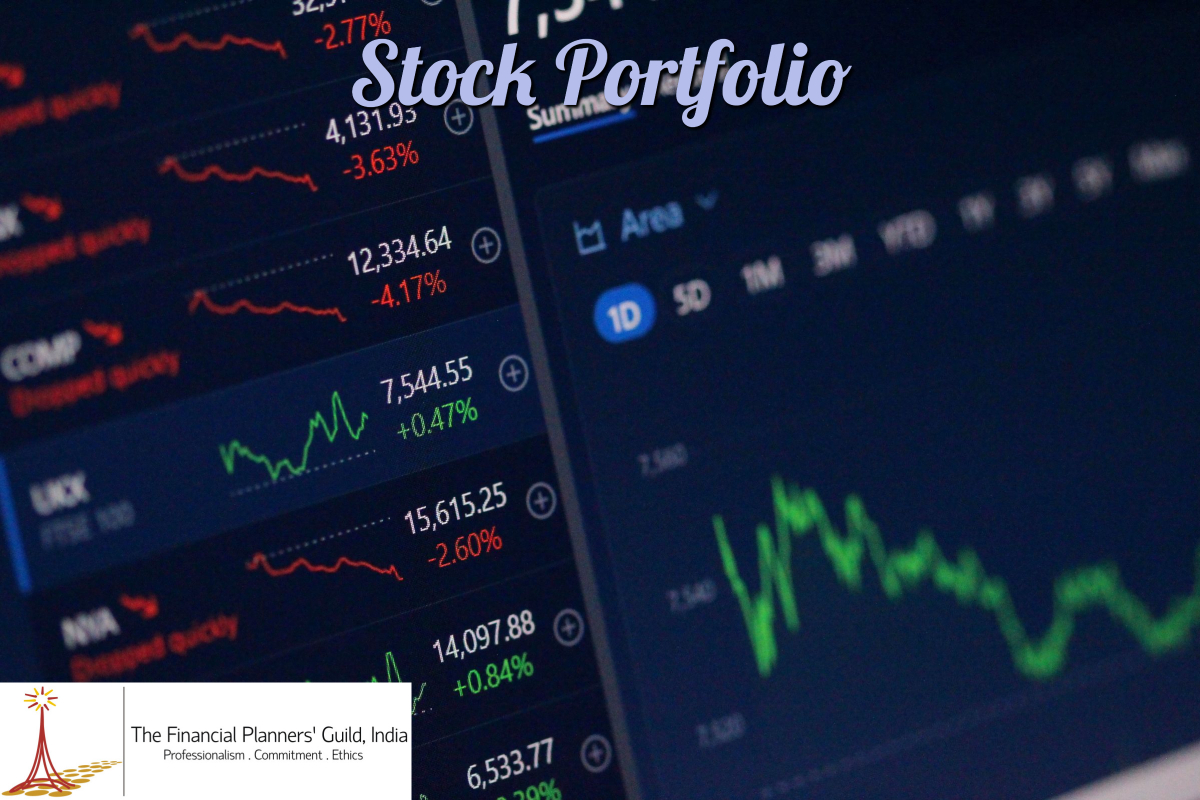
It is an established fact at least for the Advisors, that no investment strategy can be conceived without the inclusion of equity irrespective of the clients’ age (most times), family background, income levels and risk tolerance.
The most important prerequisite for success with an equity portfolio is diversification. Here I am not considering the outstanding success, which a few individuals have experienced by holding on to specific stocks like Wipro and Infosys. They are either very savvy individuals or plain lucky. We want to achieve success without luck playing too big a part.
This diversification is instantly achieved when we invest even in one equity fund because a fund portfolio consists of at least 30-40 stocks. We further diversify this by getting into Large Cap funds for investing into blue chip companies, mid cap funds for investing into fast growing companies (future blue chips) etc.
It would appear that equity funds are a better option purely from the diversification and risk management point of view.
So where does that leave stocks.
An investor can aspire to have higher returns than equity funds with a stock portfolio. Of course the attendant risks are higher. So how do we achieve higher returns without the incremental risk?
Here too the key is diversification. But the challenges range from stock selection to market timing and then there is a whole range of behavioral issues associated with managing a stock portfolio.
To circumvent them I propose what I call as an Equal Weighted Model Portfolio.
This portfolio aims to fulfill requirements of diversification as well as also address the challenge of which stocks to buy in what proportion and the market timing related issues.

Click the image to enlarge
To address the issue of diversification the portfolio will invest across 15 industries. These industries should be the core industries, ancillary industries to be avoided. Secondly select 2 leading cos. in each industry. Thus a portfolio of 30 stocks is created. Buy equal amounts of each stock so in a Rs. 30 Lakh portfolio, buy Rs. 1 lakh worth of each stock.
To address the most important issue of market timing and also eliminate the related behavioral issues, just rebalance them periodically. E.g. If stock “A” goes up in value to say, Rs. 1.12 Lakhs, sell Rs. 12000 worth of stock.
Similarly, if value of stock “B” goes down to say Rs. 85,000, buy Rs. 15,000 worth of Stock B to bring it to its original base value. Periodicity can be once a month or if stock value deviates by a certain percent from the base value.
Doing this over a period of time will ensure good results.
Advantages of the Equal Weighted Model Portfolio
Each industry or business goes through business cycles of recession-recovery-boom and downturn and the stock prices reflect those situations. The stocks we have selected are proven market leaders and will easily weather the recession and come out stronger to take advantage of the next boom.
By rebalancing as above we are only taking advantage of these business cycles, buying shares of cos. going through recession with the certainty that come boom times the stock will appreciate and we will be able to sell at higher prices. Similarly, we are selling stocks going through a boom period with the certainty that they will also experience down turn and recession during which the stock prices will go down and we will rebuy the same shares at lower prices.
A 10-year back testing of such a portfolio has shown that it has out performed the index by 2-3%. This may be a rule or may be not, but the important point to me is that we are creating a strong diversified stock portfolio and the rebalancing process ensures that we are buying low and selling high. The Model Portfolio will never give you 10 bagger returns but will also save you from total ruin in a market crash.
The only other stock investment strategy which is considered passive yet effective is index investing. In index investing however, investments are made in proportion of the weightage of each stock in that index. So in a Sensex portfolio of Rs. 30 Lakhs e.g. ITC would consist of Rs. 3.22 Lakhs, and Tata Steel would consist of Rs. 38700. The irony is that if the portfolio value increases we have to buy more of ITC so in effect in a rising market we are buying more of a stock, which already has a high weightage.
In conclusion, I believe that a stock portfolio is a worthwhile endeavor provided elements of the Model Portfolio are incorporated. But the portfolio size needs to be decent; somewhere in the range of Rs. 30 Lakhs. Anything less, I believe the costs of rebalancing would nullify the advantage. Some may argue that the corpus could be reduced by reducing the no. of industries and cos. but that would mean that the portfolio is less diversified. Remember we are creating and running a stock portfolio without any expert portfolio manager’s advice.
FPG India ©2024. All Rights Reserved.
Designed & Developed by W3M Technoz
Comments are closed.